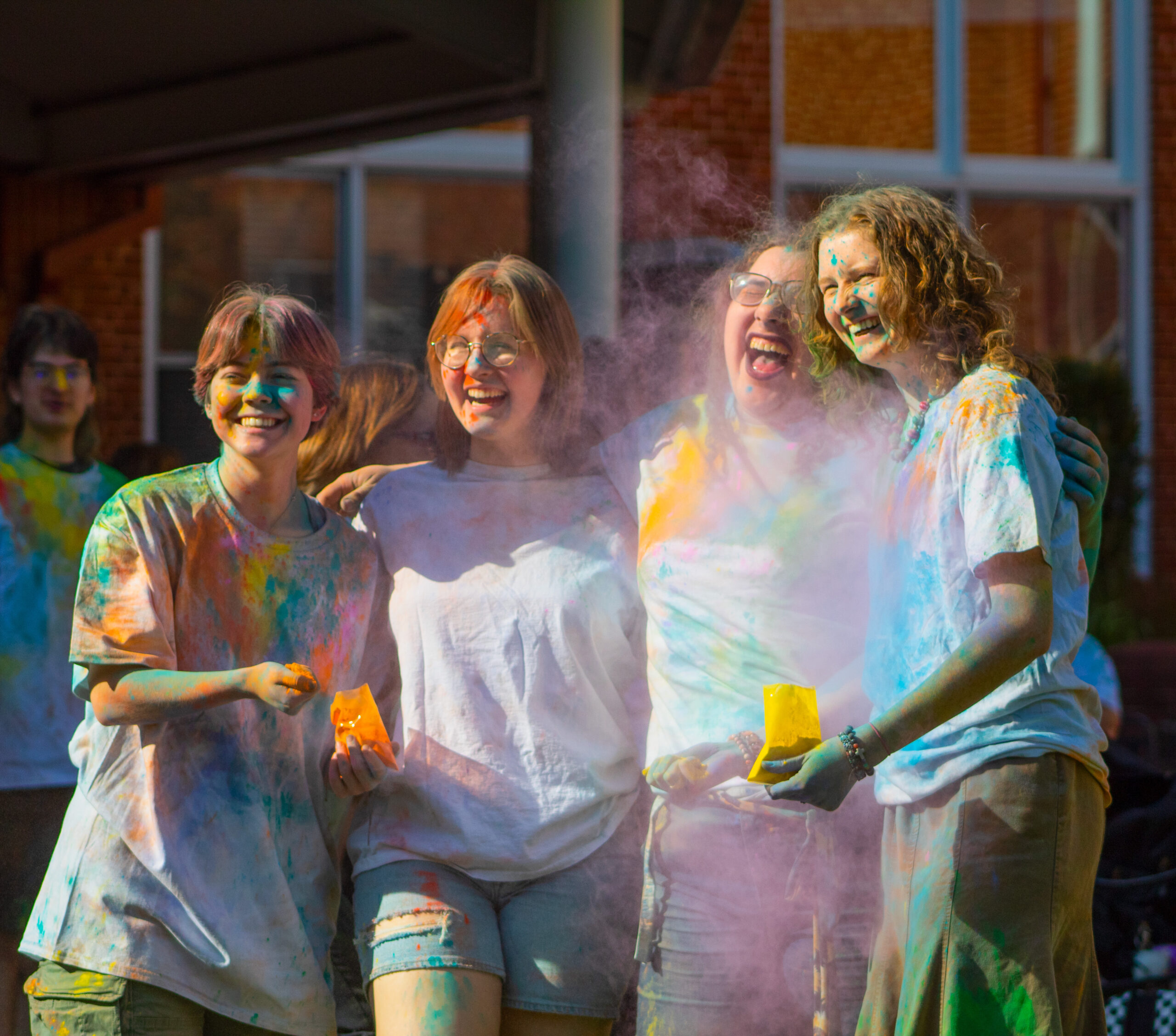
By Gracyn Van Bemmel
Hood students, faculty and staff celebrated Holi, the Hindu Festival of Colors, on April 22, and learned more about the tradition.
The event was organized by Amani Al-Dajane, the director of International Student Services. According to April Boulton, the dean of the graduate school, Hood has been celebrating Holi since 2017 and has never missed a year except for 2020, during Covid.
“We have a very large international student population, from India especially, but also some Nepalese students,” Boulton said. “This is part of their cultural tradition and their home country.”
About 12% to 14% of Hood’s graduate students are from India and Nepal, so the graduate school wanted to do something that made them feel like they were at home.
Graduate student Prashanthi Akuthota explained in a short speech during the event the origin of the colorful holiday.
According to her, Holi is a festival of harvest. There are two harvest seasons in India, and Holi is the celebration of the spring season. Though it’s often celebrated by dancing and throwing colored chalk on one another, many people have different religious and cultural reasons for celebrating. The polytheistic religion of Hinduism allows people to worship different gods and goddesses who each have their own stories.
One of the stories is about the demon king, Hiranyakashipu, who wanted all his subjects to worship him, but his son, Prahlada, rebelled against the notion. The king ordered his son to be killed multiple times, but Prahlada kept surviving because the god Vishnu kept saving him. Eventually, Hiranyakashipu got the help of his sister, Holika, to kill his son. Holika made a fire in an attempt to burn Prahlada and offered to sit with him since she was given a boon from the gods to protect her from the fire. However, Holika burned, and Prahlada survived.
Another story is about the deity Krishna, who fell in love with a milkmaid named Radha. However, his skin was dark blue and hers was fair. To rectify this, they celebrated Holi and put color on each other’s skin so that they’d be the same color.
“The first year we did this [Holi], we maybe had 10 to 15 students, a couple of staff. Nobody knew what it was,” Boulton said. “Since it was sort of establishing this cultural tradition, we had very low attendance. The first year we only did the chalk.”
Over the years, the event has gradually gotten bigger and bigger, as more things have been added, such as the handing out of white tee-shirts and the incorporation of traditional food. The food at this year’s celebration consisted of savory samosas and gulab jamun, a sweet dessert.
“It’s definitely gotten more authentic,” Boulton said. “[It’s] what you’d experience if you were abroad in India.”
However, Holi isn’t the only cultural event that Hood College celebrates. Along with the Festival of Colors, Hood students get the chance to “break the fast” at an Iftar dinner in April and celebrate Diwali in November.
The graduate school is open to student requests, meaning that if a group of students wants to celebrate a tradition or holiday that is a part of their culture, the graduate school will gladly organize an event.
To learn more about upcoming events, students can keep an eye out for new posters hung up in Whitaker Campus Center or check out Pergola Connect.




Be the first to comment